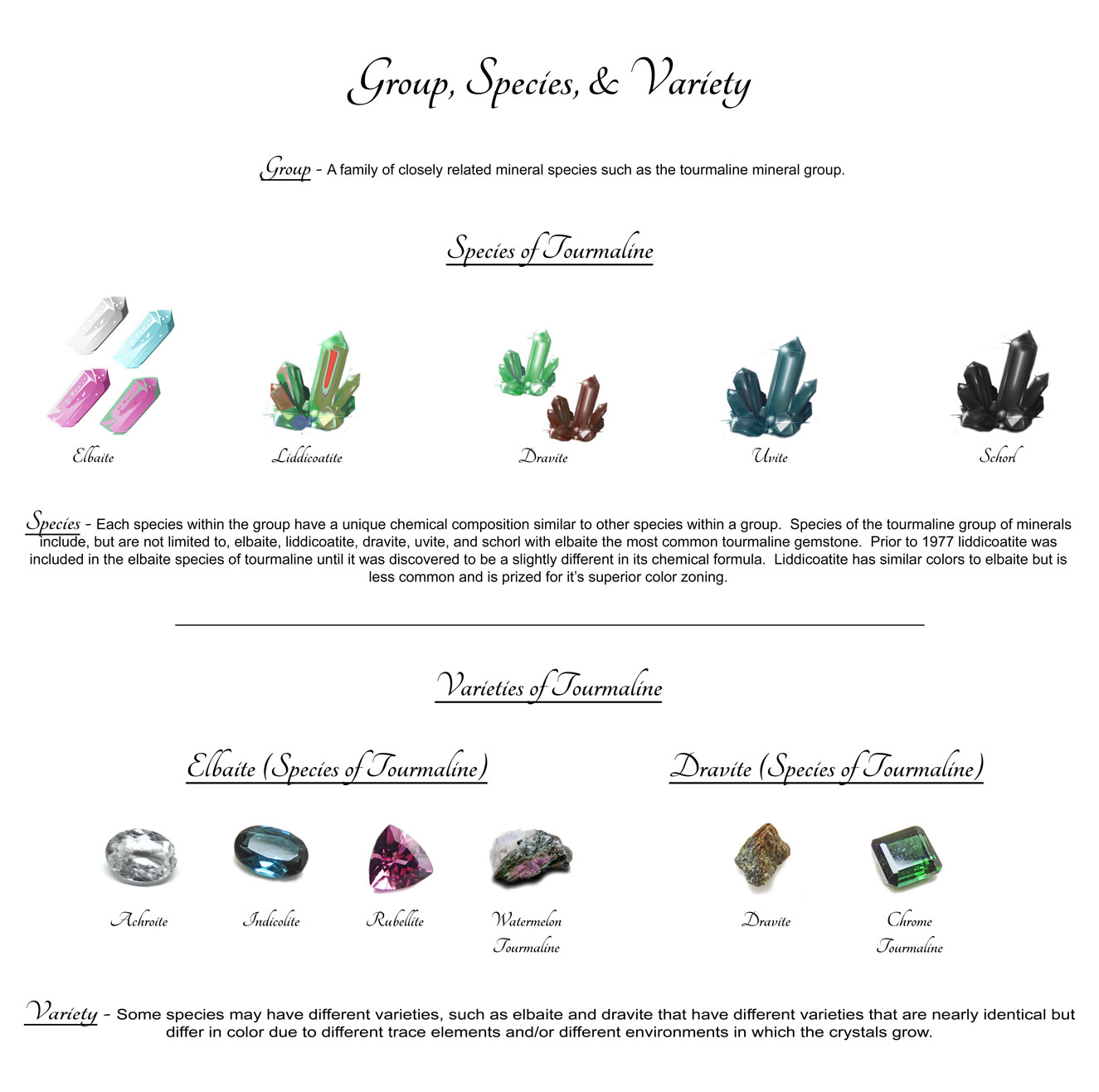
Not a single mineral, tourmaline is a group of several closely related minerals with elbaite, schorl, and dravite the most known. Other members of the tourmaline group of minerals include uvite and liddicoatite. Additionally there are other, extremely rare, minerals (such as flor-buergerite) included in the tourmaline group. Most gem varieties of tourmaline are elbaite.
Tourmalines have some interesting properties. Some tourmalines, many green and blue, are strongly pleochroic, which means the color changes depending on the angle at which the stone is viewed. Tourmalines are both pyroelectric and piezoelectric so when heated (pyroelectric) or under pressure (piezoelectric) they will generate an electrical charge. These properties make tourmalines useful in the production of sensitive electronic components. Tourmaline, specifically schorl (black tourmaline), is used as an abrasive in grinding and polishing, black pigments, and in ceramic glazes.
Specs
| Chemical Formula | The simple chemical formula, which covers the main forms of Tourmaline (Elbaite, Schorl, and Dravite), is as follows: (Na,Ca)(Mg,Li,Al,Fe2+)3Al6(BO3)3Si6O18(OH)4 The expanded formula, which additionally covers Uvite, Liddicoatite, and Buergerite, is as follows: (Na,Ca)(Mg,Li,Al,Fe2+,Fe3+)3(Al,Mg)6(BO3)3Si6O18(OH,O,F)4 | Composition | The formula of the Tourmaline group is very complex, since it contains many elements and many combinations of elements. It is one of the most complicated chemical formula of all minerals. |
|---|---|---|---|
| Color | Commonly black, brown, green, red, pink, blue, gray, and multicolored. Less common, white, colorless, yellow, orange, and purple. | ||
| Crystal System | Hexagonal | Hardness | 7 – 7.5 |
| Transparency | Transparent to opaque | Luster | Vitreous. Some black and brown specimens may be dull. |
